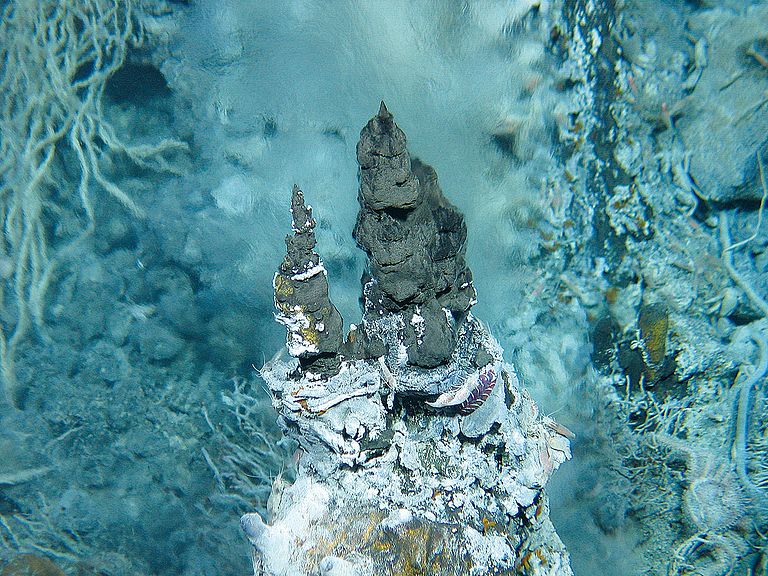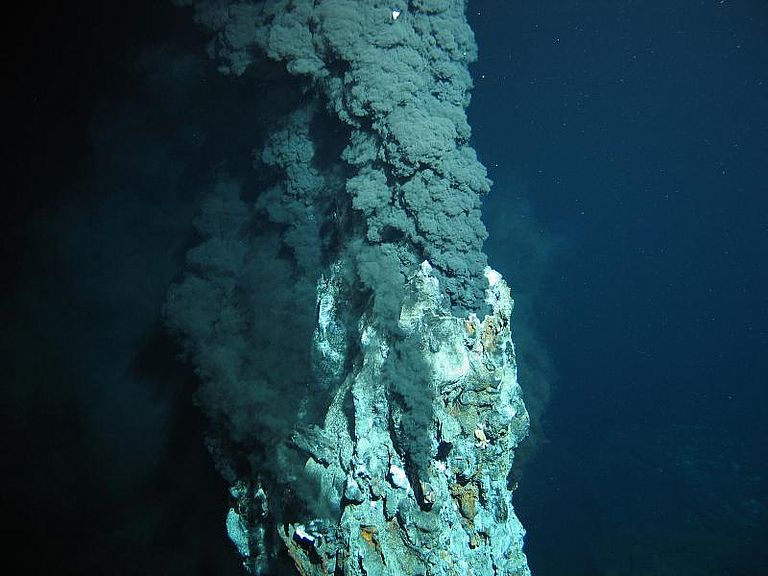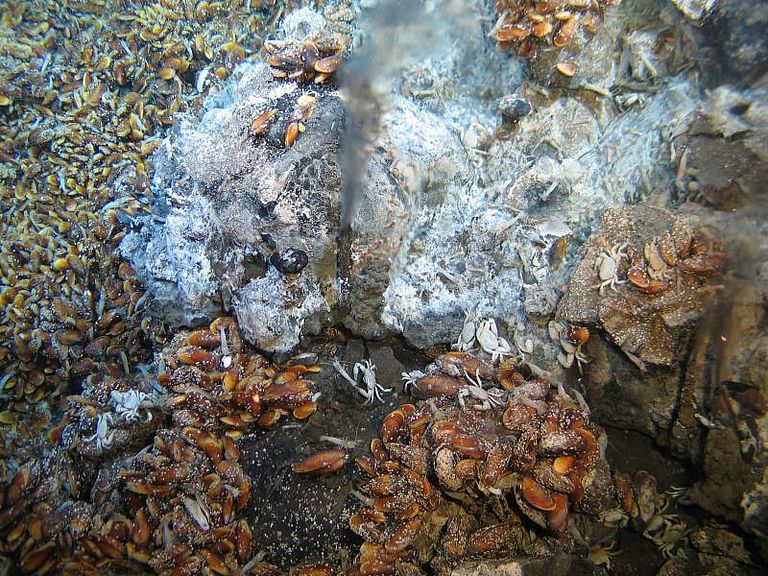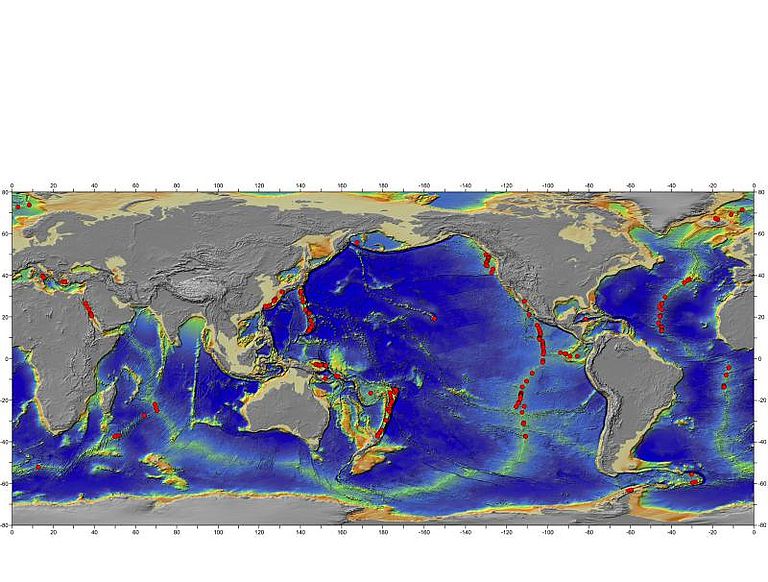Image of the Month: March 2014
Hydrothermal vents in the southwest Pacific
This photo of a hydrothermal vent was taken at a depth of about 1860 meters in the southwest Pacific near Vanuatu by a rather unique underwater photographer: the ROV KIEL 6000 of GEOMAR. During the cruise SO229 aboard the R/V SONNE, an international team of scientists investigated the hydrothermal vents and took samples of these fascinating structures on the sea floor to determine in detail the composition of liquids and gases, mineral deposits and fauna.
What exactly are hydrothermal vents?
Hydrothermal vents are formed mainly in the vicinity of mid-ocean ridges and submarine volcanoes along the active island arcs. Seawater penetrates into the seabed through cracks, crevices and faults. Deep in the earth's crust, the water is heated by the magma, causing a chemical process where the water reacts with the surrounding rock and dissolves the metals from it. This water, now enriched with hydrogen sulfide and metal ions, is highly acidic. Due to the high temperatures (up to about 400 °C), it rises again and escapes from the seabed. The contact between the hot water from the source and the 2-3°C cold, oxygen-rich and alkaline seawater causes the metals to crystallize into extremely fine sulfide particles. Often the outgoing water is so saturated with these sulfides that it appears as black smoke. These hydrothermal vents are therefore known as "black smokers". Over time, more and more sulfide particles are deposited on the sea floor and form chimney-like structures. These vents can be up to 50 meters high. The vent shown here is not a “black smoker" because the metal contents of the exiting low-salt solutions are too low.
Resources of the Deep Sea
Researchers have repeatedly found evidence of elevated levels of copper, zinc and gold in the sulfuric metal ores of the black smokers as well. Because of this mineral wealth, marine mining companies are increasingly interested in these black smokers.
Weitere Informationen:
- The World Ocean Review 3: Ressources from the Ocean - Chances and Risks will be translated soon into english and will be available here
- ROV KIEL 6000: geomar.de/en and here oceanblogs.org (sorry, on oceanblogs only german)
- Expedition SO229






